Tissa , Kataragama and Yala
The historical towns of Tissa and Kataragama are located in Sri Lanka’s south east. Tissa is dominated by lotus filled lakes, lush green paddy fields and gigantic temples dating back to the 2nd century BC. The rural shrine of Kataragama, an hour from Tissa, has great religious and historical significance and brings together multiple faiths to worship within this sacred place. En route to Tissa and Kataragama from the southern highlands you pass through the Buttala foothills, known for its savanna-like plains and home to some of the best National Parks in the country, including Uda Walawe.
Yala is Sri Lanka’s most famous national park. Forming a total area of 1268 sq km of scrub, light forest, grassy plains and brackish lagoons, it’s very rich in wildlife and you’re virtually certain to encounter elephants, crocodiles, buffaloes and monkeys.
Weather
Traditionally, the best time to visit the south coast is from December to April, with similar weather patterns to the Galle Coast. Between May and September, however, travel east beyond Galle along the south coast and you can be rewarded with more settled weather than further west. Sri Lanka is affected by two monsoons which generally means that there is good weather somewhere. October to mid-December can see heavy rain brought in by the north-east monsoon, with the south-west monsoon bringing heaviest downpours from mid-April to mid-June. There is also an unsettled inter-monsoonal period in October.
Getting There
Tissa & Kataragama can be reached travelling from the hill country via the Buttala Foothills, as well as along the south coast. Another travel option to Hambantota is via the Mattala International Airport which opened in 2012. There are daily transfers from Colombo’s International Airport to Mattala on Sri Lankan Airlines
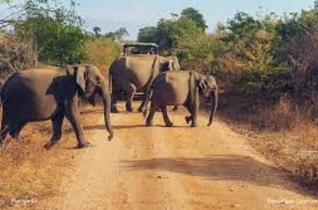
Udawalawe National Park
Udawalawe, in Sri Lanka’s south-central sector, is the area that most resembles an African game park. Elephant sightings are pretty much guaranteed in a national park that is conveniently positioned between the southern highlands and the south coast. It centres upon Udawalawe reservoir and although it is about a third of the size (at around 300sqkm) and less well known than Yala, it can be somewhat quieter and it generally packs a punch. Opened in 1972, as Sri Lanka’s fifth national park, It is open all year round for safaris even in the dry season in September and October. The nearby Elephant Transit Home is another attraction with good ethical credentials.
Duration: 3 hours
Best time: Year-round

Kataragama
The jungle shrine of Kataragama, an hour’s drive from Tissamaharama, holds immense religious and historical significance, uniting Hindus, Buddhists, Muslims, and Christians. This ancient site features numerous temples for various faiths, including a shrine believed to have been built by King Dutugemunu in the 2nd century BC for the Kataragama God. Additionally, the first century BC Buddhist Dagoba, Kirivehera, is located here. The main shrine, Maha Devala, dedicated to God Skanda, the Hindu war god, along with other Hindu shrines, conducts daily rituals. These rituals include poojas with fruit, flowers, incense, oil lamps, coconut dashing, bell clanging, and continuous chanting, creating a mesmerizing experience.
Duration: 1 hour
Best Time: Year-round
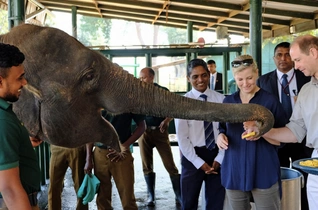
Udawalawe Elephant Transit Home
Visit the Elephant Transit Home in Udawalawe National Park, a rehabilitation centre for orphaned elephant calves, in the confidence that you are supporting an ethical commitment towards enhancing their chances of survival in the wild. The Elephant Transit Home exists for the primary objective of rehabilitating orphaned elephant calves before releasing them.
Duration: 1 hour
Best Time: Year-round
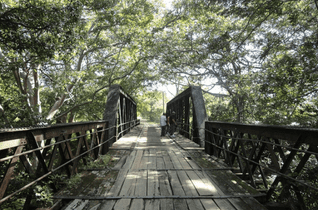
Lunugamvehera National Park
Lunugamvehera National Park, which lies between Yala and Uda Walawe, acts as an elephant corridor between the two better-known national parks and also protects the wildlife that relies upon the reservoir of the same name.
Duration: 2 hours
Best Time: May to September
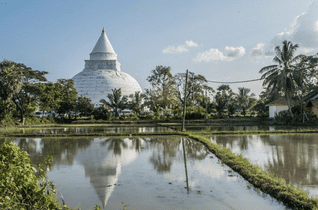
Tissamaharama
The serene and tranquil town of Tissa, short for Tissamaharama, was the capital of the ancient Ruhunu Kingdom in the 2nd century B.C. Tissa, named after King Kavantissa who did much to develop this sacred town also built the sprawling Tissawewa lake as well as the Debarawewa lake located near by. These lakes still serve as a valuable resource to the surrounding villages. The town’s landscape is dominated by gigantic semi-circle shaped ancient Buddhist dagobas. Several ancient Buddhist temples including the Maha Stupa, Sandagiri dagoba and monastery complex, Yatala and the Menik dagobas are all located nearby as well as an archeological Museum that provides a glimpse into the ancient Ruhunu kingdom.
Duration: 2 hours
Best Time: Year-round
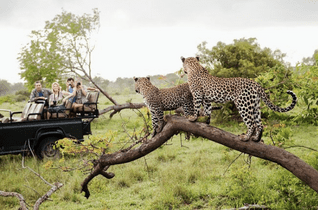
Yala National Park
Yala National Park is one of the largest and certainly the most popular national park in Sri Lanka, and has the highest density of leopards anywhere in the world. Hidden away in the far south-east of the country, it comprises five separate blocks covering 141sqkm.
Yala’s varying habitats – consisting of scrub plains, jungles, rocky outcrops, forest, mangroves fresh water lakes, rivers and coastal lagoons – provide homes for many species of animals including sloth bear, herds of elephants, buffalo, monkeys, sambar, deer, crocodiles. For many, though, the chief attraction is the endangered leopard sub-species Panthera pardus kotiya, which is found only in Sri Lanka. You may see it slinking in the undergrowth or lolling on one of the rock boulders which dot the park. Yala has some the best accommodation options of Sri Lanka’s national parks, but can be busy in peak season.
Duration: 3 hours
Best Time: December to August

